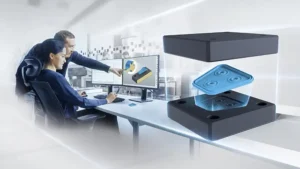Trelleborg hosting webinar to introduce the iCast liquid silicone rubber digital manufacturing process
Trelleborg, Sweden – Trelleborg Sealing Solutions unique iCast™️ digital manufacturing process is an innovation in liquid silicone rubber (LSR) processing. It supports customers with a fast and flexible process for small batch production and product development of LSR parts.
Involving no tool investment, iCast™ offers a cost-effective way to develop product variations or try out different design concepts before investing in serial production tools, as well as enabling the start of pre-series and series production with small batches.
Felix Schädler, Project Manager Innovation & Technology, says, “by utilizing digitalization and innovative manufacturing technologies, the iCast™ process dramatically cuts the time from concept to production for prototypes. These are typically produced in approximately four and a half months, but with this new technology, the process takes a maximum of three weeks for the average part.
“With iCast™ LSR technology, parts are manufactured in standard grade two-component platinum-cured LSR and are comparable to injection molded parts. By enabling quick and multiple design iterations of components, this helps manufacturers meet the pressures of rapidly moving markets that are demanding faster new product introductions, improvements, and advancements.”
Trelleborg Sealing Solutions experts are hosting a free-to-attend technical webinar on March 31, 2022 to introduce this new technology and demonstrate how it can save time and costs.
The five-step iCast™ process utilizes digitalization and new manufacturing technologies to significantly speed up the time from enquiry to product production. It starts with the order enquiry, requiring the submission of 3D part data and order details. This triggers a feasibility study, based on artificial intelligence (AI), to see if the iCast™ process is suitable for the production of the part.
Upon completion of the feasibility study, the part design is analyzed, and the individual digital mold layout is created, based on 3D data. If necessary, this undergoes mold flow simulation. In a virtual environment, this process identifies the optimum production process using additive manufacturing (AM) technologies to avoid errors at an early stage and achieve the highest quality.

